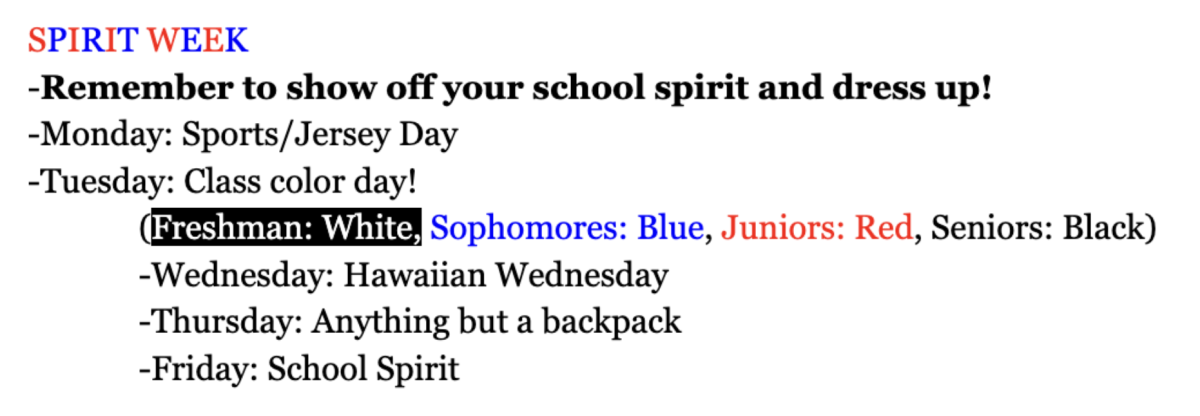Sara Kloepfer
Reporter
Newspapers nation-wide are dying left and right and the San Francisco Chronicle might be the next casualty.
Hearst Corporation, which owns the Chronicle along with 15 other newspapers across the United States, announced Feb. 29 if its unions were unable to provide concessions, the company would seek a buyer for the paper. Union members voted to compromise by cutting at least 150 union jobs, eliminating seniority rights, reducing vacation time, sick leave, and maternity and paternity leave, and expanding workweek hours.
If the savings from these concessions are not enough, and consequently no buyer is found, the Bay Area’s largest and oldest newspaper will close.
“I think it’s messed up that no one can afford to support the paper anymore,” said sophomore Julianna Wetmore.
“It’s wrong to stop supporting it now just because there’s a rough economy. The Chronicle is part of San Francisco.”
The Chronicle intends to maintain its Web site, SFGate.com, but without a print edition to rely on for its information, the site cannot continue to thrive as it has.
“Moving the paper online shows how technology has advanced and is taking over the news industry,” said Wetmore.
Hearst must undergo serious cost reductions in order to save the Chronicle. According to a statement issued by Hearst, the Chronicle lost over $50 million last year and is expected to lose even more in 2009. One of the Chronicle’s main challenges is production and delivery of the newspaper to a weekly subscriber is more than double the cost of the subscription. The Chronicle has raised its home delivery and single-copy prices, outsourced its printing, and considered selling its building. However, in order to break even, the Chronicle must balance its profits from advertising and circulation with its expenses.
“It’s important to keep the paper because even though I don’t read it everyday, when I do read it, it’s very interesting and informative, especially the Datebook section,” said sophomore Bridgette Hanley. “I get so much information from there about concerts, movies, and exhibits in the Bay Area. The promotion of cultural events in the Bay Area from the Datebook helps the art economy, so that might be affected if the Chronicle closes.”
One potential solution to the paper’s financial struggles is to turn the Chronicle into a nonprofit corporation with some continued financial support from Hearst.
Public Relations at the Chronicle declined to comment on this story due to ongoing financial negotiations.
Other companies in charge of major newspapers have struggled to stay afloat financially.
E.W. Scripps, a company owning 17 newspapers across the country, announced Feb. 18 it was introducing widespread pay cuts and suspending some retirement benefits.
In other efforts to alleviate the company’s financial stress, Scripps’ senior managers took pay cuts in January and Scripps will temporarily stop matching employees’ 401(k) plan starting in April. The Scripps pension plan will be frozen so employees can no longer bolster their retirement payments with service time or higher salaries.
Despite these measures, Scripps was unable to continue to finance the Rocky Mountain News, which had to print its last edition Feb. 27.
In the widely popular online video documenting the Rocky’s closing, Rich Boehne, President and CEO of Scripps, addressed a full newsroom with the announcement that the almost 150-year-old paper would be put up for sale.
Boehne said the closing was “something that would’ve been unthinkable just a few months ago, but I think we’ve suddenly found a time in this industry and in this economy when the unthinkable has become the commonplace, unfortunately.”
Editor and publisher John Temple acknowledges that not even the state of the economy could have prepared the staff for the announcement.
“Everybody knew that the newspaper industry is having its troubles, but the actual prospect of losing something that they love, and losing the job that they depend on, was brutal,” said Temple in the video.
Allen Klosowski, formerly of Red Blue America, a Web site that discusses news and politics, agrees that the sudden decline of the newspaper industry has caught people by surprise.
“Obviously there are challenges in the newspaper industry that 20 years ago, nobody anticipated, 10 years ago, were starting to show their head, five years ago, by the time that most newspapers saw it coming, it’s pretty difficult to change their business model that quickly and to adapt,” said Klosowski in the video.
Another newspaper taken down by the economy is the Seattle Post-Intelligencer. Hearst announced the closure of the 146-year old newspaper, Seattle’s oldest business, March 16.
In the online video documenting editor and publisher Roger Oglesby’s speech the morning of its closure, Oglesby addressed the newsroom, saying, “Tonight we’ll be putting the paper to bed for the last time. But the bloodline will live on.”
Olgesby was referring to the 40-person staff that continues its online publication, SeattlePI.com.
“Hearst fought for years to keep this place going, but time and these rotten economic conditions finally caught up with us,” said Oglesby in the video. “But there’s another part to this story and I’m not going to let you forget it. It’s the part that has to do with what will live on, and who’s responsible for it.”
In a time when newsprint is being replaced by downloadable stories, Oglesby’s parting words to his staff set a positive example for other papers facing possible termination: “This is a great newspaper, and has been for a long time. Let’s show the world it still is. Let’s show them what we can do. One more time.”








